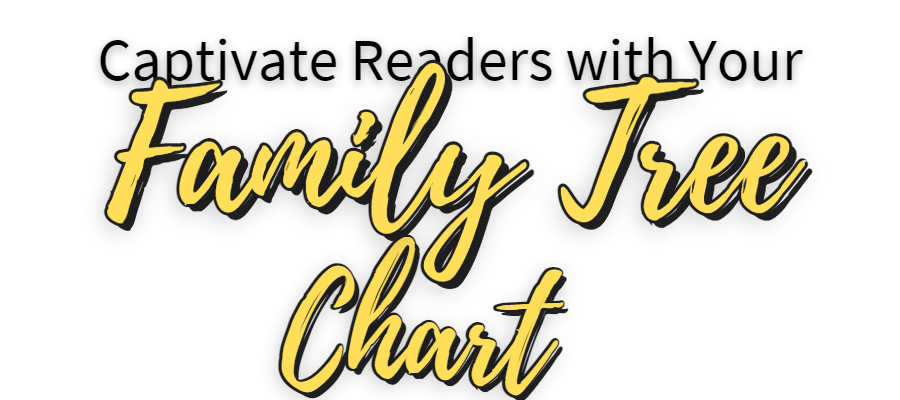
In the grand tapestry of storytelling, characters are the threads that weave through every plot twist and narrative arc.
Let’s explore a tool that not only keeps your literary family organized but also captivates readers in a visual dance of relationships – the Family Tree Chart.
More than just a visual aid, this tool is a gateway to the intricate connections that make your narrative rich and unforgettable.
Crafting Your Literary Legacy
The first step in captivating your readers is to craft your Family Tree Chart. Visualize the relationships between your characters, creating a comprehensive map that reflects the intricate connections within your narrative universe.
Whether it’s blood ties, alliances, or shared destinies, let the family tree be the visual backbone of your storytelling.
To help you create a family tree chart, like this one:

Navigating Character Relationships
The beauty of a Family Tree Chart lies in its ability to help readers navigate the complex web of character relationships. From protagonists and antagonists to allies and rivals, this visual aid provides readers with a clear roadmap, enhancing their understanding of the dynamics at play in your narrative.

Visual Appeal in Blog Posts
Incorporate your Family Tree Chart into your blog posts. Share insights into specific branches of the tree, unraveling the mysteries of character relationships. This visual appeal adds a layer of engagement to your blog, transforming it into an immersive experience for your readers.

Exclusive Insights for Email Subscribers
Entice readers to join your email list by offering exclusive insights through your Family Tree Chart. Share behind-the-scenes anecdotes, character development secrets, or future plot hints that are intricately tied to the relationships depicted in the chart. This not only builds your email list but also strengthens the bond with your most dedicated readers.
Social Media Teasers
Tease your audience on social media with snippets from your Family Tree Chart. Share character highlights, upcoming twists, or intriguing connections that leave your followers eager for more. The shareable nature of visuals on social platforms can amplify your reach and draw new readers into your narrative world.
Conclusion
In the art of storytelling, every character is a chapter, and the relationships between them form the heart of the narrative. The Family Tree Chart becomes a key that unlocks the doors to your literary legacy, inviting readers to explore the connections that breathe life into your stories.
So, fellow wordsmiths, let your Family Tree Chart be a testament to the richness of your storytelling. Guide your readers through the branches of your literary legacy, and may each character leave an indelible mark on the hearts of those who venture into your narrative world.
What to Include on Your Family Tree Chart
Your family tree chart is a diagram that shows the connections between your characters and your books within your book series.
The sky’s the limit in choosing HOW you put this together, but let me give you a few ideas on WHAT to include:
- The names of your main characters
- Your book covers
- The relationships between your main characters (familial or otherwise)
- The order of your books within your book series
- Characteristics or traits of some of the characters
Please note: Your family tree chart has a specific purpose – to identify how your characters are connected within your book series.
Here’s an example, one I made of the Dark Series by Christine Feehan, years ago.

Build Your Own
Create Your Own Family Tree Chart
Use this fun content template to create your own family tree!
Use it again and again for each book series or each book to showcase your characters!

What’s Next…
Want a deeper look into how to create content that’s entertaining, educational, engaging, inspiring, and persuasive.
Still wondering about the benefits of offering quality content? Take a look at this article.
Make sure to add the essential content elements to your author platforms!
If you’re ready to take your website to the next level, check out how you can Build Your Own Content Library and pick a content template that fits your readers.
Check out the Ultimate Guide to Building your Content to get tips on how to do-it-yourself!
